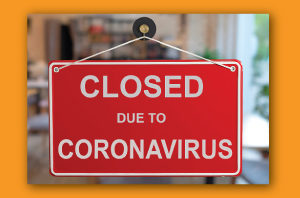
One of the toughest challenges marketers face is persuading buyers to choose their brand over a brand that they regularly purchase.
Brand loyalty and human habits are challenging to break, especially against brands that are well established in the marketplace.
There are many examples of even powerful companies with large amounts of resources failing to convince consumers to break their brand habits. For example, Microsoft has used a large number of resources trying to convince the marketplace that Bing is better than Google and they have not found much success. Another example is Google+ trying to challenge Facebook in social media.
Brands have to provide a significant reason to get consumers to switch. For example, offering a price discount may work in the short-term however, if the brand fails to impress the consumer, then the consumer will switch back to their regular brand.
We would like to thank Business Insider for this informative article on Breaking Brand Habits.
Habits
Here are some different ways to look at habits:
- Cognitive shortcuts
If you prefer Tide and you regularly purchase it over other brands, you don’t put much thought into it when you go to the store to buy laundry detergent. It saves time and effort.
- Relationships between brand and buyers
When fans root for their favorite teams or wear clothing associated with the team, they are promoting their relationship with them and fellow fans. Even if a person moves to another city they tend to stick with their favorite teams and athletes. Breaking the habit and choosing something else to root for is very tough.
- Status contributors
Many buyers receive a contribution to their personal brand when they identify with brands (ex. sports team loyalty). The association with the brand identifies them as a member of an exclusive club.
What habits do for people?
Habits help people save time and think less about everyday decisions. Habits help buyers make quicker and safer buying decisions.
Why are they hard to break?
There are many reasons why habits are hard to break. Some of the more important ones are listed below.
- Physical connections
Once people develop habits, their decisions follow the established connections in their brain. Research shows that habits are stored, or ingrained, when the dendritic spine component of brain neurons are physically rebuilt. These physical changes make it harder for people to change habits.
- Switching costs
Another reason habits are hard to change is the switching costs. Making a change takes people out of their comfort zone and can be perceived as more risky. People naturally want to stay in their comfort zone because it feels safer and there is much less risk. It takes a lot of resources and effort to switch.
- Rationalization
Even if a habit is negative, the brain often rationalizes that it is safer to continue making the same choices as usual since making the change might be harmful. For example, people go through this thought process when dealing with health related issues, like when a doctor recommends a surgery, but you are thinking that you can die as a result of the operation. Most pick what they believe is the least risky or harmful option.
How to break buyer habits
- Marketing Research
Research your customers and your competitions customers. Figure out what buyers want and what needs/wants that they have that they are not getting from their current brands.
- Branding
Develop a branding strategy that promotes your brands value proposition. Use this to position your products as having sufficiently unique and important capabilities that (1) your target audience wants but (2) your competitors do not provide.
- Product
Develop products that meet or exceed the expectations promised by your branding strategy. Having the best promotion in the world won’t help you if your product fails to deliver.
- Communications
Create promotion strategies that clearly communicate the compelling benefits of your products so that members of the target audience will understand why they should (1) buy products from you and (2) break the habit of buying them from your competitors.
Past Success Stories
Google entered the search engine market after Infoseek, AltaVista, Excite, HotBot, and Yahoo! were already providing search services on the Internet. Google unseated them with a very easy-to-use, uncluttered home page that performed searches easier and better. Google broke any habits that had formed with the other search engines. They made it very easy to do so, and the word spread quickly. Microsoft’s Bing has come long after the Google habit was formed and has been unable to make any significant dent in the use of Google for searches.
Does anyone still regularly use MySpace? MySpace used to be the top social media site and was popular before Facebook. Yet, Facebook grew faster and became the largest social media network because it convinced as well as provided users with more and better value. Google developed Google+ to unseat Facebook, but Google has not provided the marketplace with sufficiently compelling reasons for users to switch.
Apple
Apple created products with compelling and sleek designs that got buyers to take notice. Apple’s products not only looked great, but were also easy to use and worked really well. Consumers raved about their products and word spread quickly in the marketplace. With the iPhone, Apple disrupted a marketplace that was dominated by Nokia and RIM. This disruption caused these established companies to rapidly lose market share and dominance, while Apple has become one of the most valuable brands in the world.
Introducing a new product that breaks habits
Introducing a new product with the intention of breaking entrenched brand habits is never easy, even with a solid product or service. Consumers may not understand your product’s benefits right away. It is important to properly position your product and communicate its advantages.
2 Comments
Pingbacks
-
[…] Breaking Brand Habits […]
-
[…] Breaking Brand Habits […]




